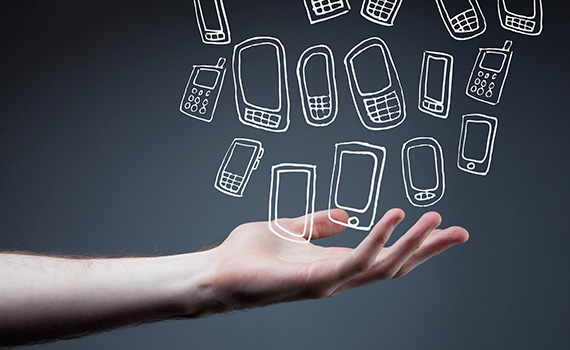Creating healthy consumers with mobile app technology
Does your organization need an app?
If it seems like everyone is talking mobile, it’s probably because they are. Mobile devices are dominating the market—they’ve surpassed desktop usage and show no signs of stopping. Responsive web design—design that scales from desktop to tablet to smartphone—is a must have (especially in light of Google’s plans to penalize unresponsive sites), but what about mobile apps?

Revenues for mobile apps, content and advertising in 2013 were a cool $205 billion — they’re projected to hit $576 billion by 2020…with figures like that, something must be working.
There isn’t a formula for determining whether an organization needs a mobile app. Apps are costly to develop and maintain and require the consumer to be actively engaged at the outset — whereas searching the web, finding a responsive site and browsing can be relatively passive. The key to determining whether a mobile app is right for the organization is to consider whether the organization needs to access the device’s capabilities — will the organization need to send alerts or notifications to the user? If not, then there isn’t a demonstrable advantage for an app.
The good news: If you pass the litmus test—if you need to communicate with users by way of notifications and alerts—a mobile app can help catapult the frequency of use, consumer engagement and brand advocacy of the organization. Mobile apps allow for constant brand visibility and a direct marketing channel to users. Push notifications, regular or sporadic reminders to consumers are quick, subtle, nonintrusive ways to reach the audience and keep the organization top of mind.
For example, the free mobile app MyFitnessPal notifies users if they haven’t logged their daily calories by 8PM each evening. Mobile apps that deliver reminders for medications or diagnostic testing can be monitored by both the patient and physician to optimize treatment plans. Consumers can always opt out of push notifications, but it’s typically easier to swipe past a notification than it is to disable the app entirely.
In conjunction with push notifications, iBeacon technology allows marketers to target consumers when they’ve arrived at specific locations. The arrival of the user at a specific location can suggest a more captive audience. Examples include grocery stores targeting customers with coupons for a weekly special or pharmacies reminding visitors that it’s time for a flu shot.
Mobile apps have been more closely associated with national brands and consumer products, but as the consumption of healthcare aligns more closely with the consumer retail experience we could start to see a proliferation of mobile applications in healthcare marketing.
Learn more here.
